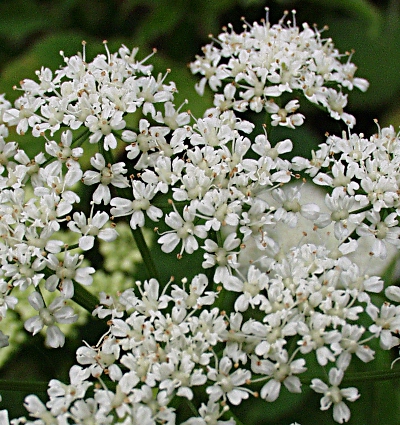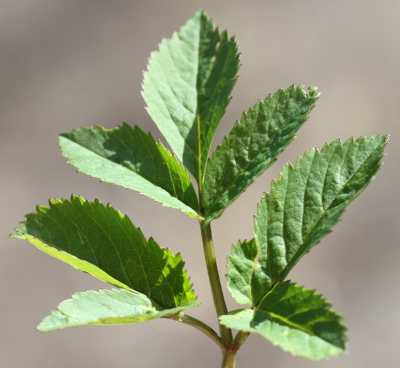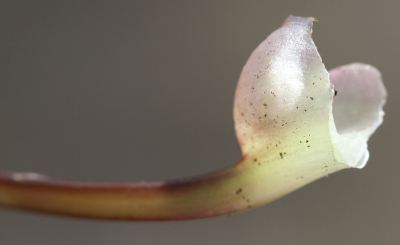Goutweed |



Flowers,
leaf and leaf sheath of the goutweed
(Aegopodium
podagraria)
| Aegopodium podagraria L.: | |
| Blooming period: | June–August |
| Height: | 30–100 cm |
| Flowers: | Ø approx. 4 mm, bisexual, stamens: 5, styles: 2 |
| Petals: | 5, white, rarely reddish |
| Sepals: | very small |
| Stem leaves: | alternate, ternate or bi-ternate |
| Basal leaves: | bi-ternate |
Plants perennial, herbaceous with creeping, white rhizome.
Stem erect, glabrous, hollow and grooved, reddish at base.
Leaves long-petiolate, petioles triangular in cross-section and solid, widened bulbous at the base and enclosing the stem as a membranous sheath.
Basal leaves slightly blue-green, bi-tripartite (9 leaflets per leaf).
Stem leaves tripartite (3 leaflets per leaf). But two or three leaflets are often fused.
Leaflets with unequal serrated margins, 4–8 cm long, oblong to ovate, pointed, with an oblique heart-shaped base.
Inflorescence: double umbel; Umbel with 5 to 25 rays, involucre and involucels are missing.
The marginal petals are slightly extended. Petals bilobed, at the apex bent inwardly and not ciliated. The two strongly spreading styles are more than twice as long as the stylopodium, on which they stand.
From the ovary after pollination by bees, flies and beetles, a 2-piece, oval, flattened laterally schizocarp (achene) developed. Mericarps (half-fruits) 3–4 mm long with 5 narrow ribs, without oil channels.
| Floral formula: |
| *–↓ K5 C5 A5 G(2) inferior |
Occurrence:
Among
bushes, in forests, gardens, along creeks and in parks. Prefers partial
shade, moist and very nitrogenous locations.
Distribution:
Temperate
Europe and western Asia. Naturalized in North America.